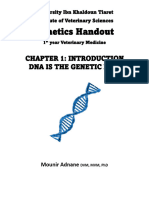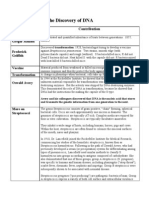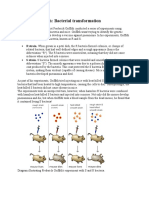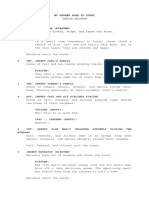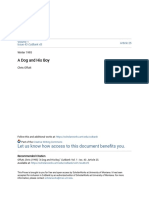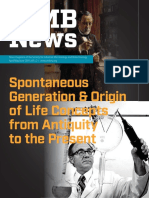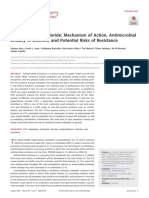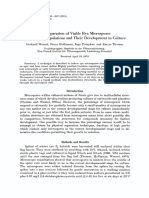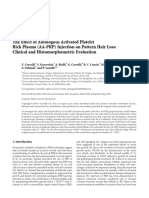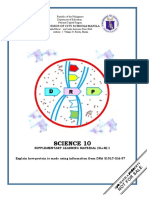0% found this document useful (0 votes)
100 views2 pagesDNA Study Guide
Frederick Griffith discovered that heat-killed pathogenic bacteria could transform living non-pathogenic bacteria into pathogenic bacteria when mixed. This suggested some chemical component of the dead bacteria was causing heritable changes, but its identity was unknown. In the 1940s, Avery, MacLeod and McCarty found that heat-killed pathogenic bacterial DNA, but not proteins or RNA, could transform non-pathogenic bacteria, leading them to conclude that DNA is the genetic material. Hershey and Chase later confirmed this using bacteriophages and radioactive labeling, showing that DNA, not proteins, was the molecule viruses inserted into bacteria. Further evidence came from Chargaff, who found DNA composition varied between species and noticed regular ratios of nucleotide
Uploaded by
Rielle Dela MercedCopyright
© © All Rights Reserved
We take content rights seriously. If you suspect this is your content, claim it here.
Available Formats
Download as PDF, TXT or read online on Scribd
0% found this document useful (0 votes)
100 views2 pagesDNA Study Guide
Frederick Griffith discovered that heat-killed pathogenic bacteria could transform living non-pathogenic bacteria into pathogenic bacteria when mixed. This suggested some chemical component of the dead bacteria was causing heritable changes, but its identity was unknown. In the 1940s, Avery, MacLeod and McCarty found that heat-killed pathogenic bacterial DNA, but not proteins or RNA, could transform non-pathogenic bacteria, leading them to conclude that DNA is the genetic material. Hershey and Chase later confirmed this using bacteriophages and radioactive labeling, showing that DNA, not proteins, was the molecule viruses inserted into bacteria. Further evidence came from Chargaff, who found DNA composition varied between species and noticed regular ratios of nucleotide
Uploaded by
Rielle Dela MercedCopyright
© © All Rights Reserved
We take content rights seriously. If you suspect this is your content, claim it here.
Available Formats
Download as PDF, TXT or read online on Scribd
/ 2





















